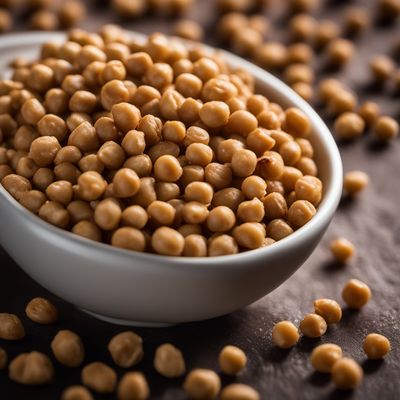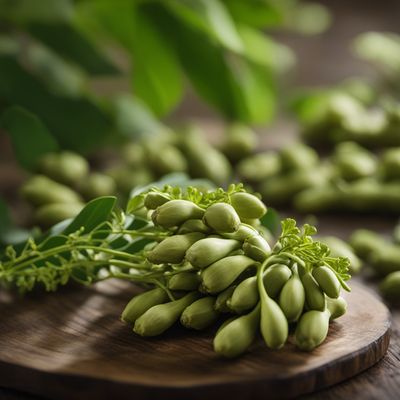
Ingredient
Peas (dry) and similar-
The Mighty Legume: Unlocking the Potential of Dry Peas in Your Kitchen
Dry peas, also known as field peas, are small, round legumes that are harvested when fully mature and then dried. They have a firm texture and a slightly sweet, earthy flavor. With a vibrant green color, dry peas can be used whole or split, and they become tender and creamy when cooked. Their versatility makes them a staple in many cuisines around the world.
Origins and history
Dry peas have a rich history dating back thousands of years. They are believed to have originated in the Mediterranean region and have been cultivated in various parts of the world, including Europe, Asia, and the Americas. Dry peas have been a dietary staple in many cultures, providing a reliable source of protein, fiber, and essential nutrients.
Nutritional information
Dry peas are a nutritional powerhouse, packed with protein, dietary fiber, vitamins, and minerals. They are particularly rich in folate, iron, potassium, and magnesium. A 1-cup serving of cooked dry peas contains approximately 230 calories, 16 grams of protein, and 16 grams of fiber.
Allergens
Dry peas are not commonly associated with allergies, but individuals with legume allergies should exercise caution.
How to select
When selecting dry peas, look for ones that are uniform in size, with a vibrant green color and no signs of discoloration or damage. Avoid any packages with moisture or insect damage. If purchasing from a bulk bin, ensure that the peas are free from debris and have a fresh aroma.
Storage recommendations
Store dry peas in an airtight container in a cool, dry place, away from direct sunlight. They can be kept for up to a year without significant loss of quality.
How to produce
Dry peas can be grown by amateur gardeners in temperate climates. They require well-drained soil and full sun. Sow the seeds in early spring, keeping them moist until germination. Provide support for the plants as they grow, and harvest the peas when the pods are dry and brittle.
Preparation tips
Before cooking dry peas, it is recommended to soak them overnight to reduce cooking time and improve digestibility. Rinse the soaked peas thoroughly before cooking. Dry peas can be boiled, simmered, or pressure-cooked until tender. They are commonly used in soups, stews, curries, and salads. For added flavor, consider seasoning them with herbs, spices, or aromatics.
Substitutions
N/A (Dry peas have a unique texture and flavor that is difficult to replicate with other ingredients.)
Culinary uses
Dry peas are a versatile ingredient that can be used in a variety of dishes. They are commonly used in soups, such as split pea soup, and stews, adding a hearty and creamy texture. They can also be mashed or pureed to create dips, spreads, or fillings for savory pastries. Additionally, dry peas can be sprouted and used in salads or stir-fries.
Availability
Dry peas are commonly available in grocery stores and supermarkets worldwide. They are also cultivated in many countries, including the United States, Canada, India, China, and Russia.
More ingredients from this category

Pigeon peas (dry)
The Versatile Legume: Pigeon Peas

Chickpeas (dry)
The Protein-Packed Legume

Moringa (dry)
The Miracle Tree: Moringa's Nutritional Powerhouse

Chickling vetches (dry)
The Tiny Powerhouse: Unveiling the Nutritional Marvels of Chickling Vetches

Asparagus peas (dry)
The Hidden Gems of Legumes

Garden peas (dry)
Versatile Legumes